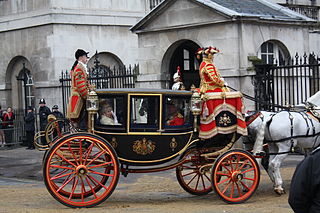
Rayne is a village of about 2,300 residents in the Braintree district of Essex in the East of England.

Earl of Essex is a title in the Peerage of England which was first created in the 12th century by King Stephen of England. The title has been recreated eight times from its original inception, beginning with a new first Earl upon each new creation. The most well-known Earls of Essex were Thomas Cromwell, chief minister to King Henry VIII, Sir William Parr (1513-1571) who was brother to Queen Catherine Parr who was the sixth wife of King Henry VIII, and Robert Devereux, 2nd Earl of Essex (1565–1601), a favourite of Queen Elizabeth I who led Essex's Rebellion in 1601.

William Paulet, 1st Marquess of Winchester, styled Lord St John between 1539 and 1550 and Earl of Wiltshire between 1550 and 1551, was an English Lord High Treasurer, Lord Keeper of the Great Seal, and statesman.

Sir William Capel of Capel Court in the parish of St Bartholomew-by-the-Exchange in the City of London and of Hadham Hall in the parish of Little Hadham, Hertfordshire, served as Lord Mayor of London and as a Member of Parliament for the City of London.

Arthur Capell, 1st Baron Capell of Hadham, of Hadham Hall and Cassiobury House, Watford, both in Hertfordshire, was an English politician who sat in the House of Commons from 1640 until 1641 when he was raised to the peerage as Baron Capell. He supported the Royalist cause in the Civil War and was executed on the orders of parliament in 1649.

Lady of the Bedchamber is the title of a lady-in-waiting holding the official position of personal attendant on a British queen regnant or queen consort. The position is traditionally held by the wife of a peer. A lady of the bedchamber would give instructions to the women of the bedchamber on what their queen wished them to do, or may carry out those duties herself.

Little Hadham is a village and civil parish in the district of East Hertfordshire, Hertfordshire, England. At the census of 2001 it had a population of 1,081, increasing to 1,153 at the 2011 Census. It is bypassed by the A120 road, which connects it to the nearby town of Bishop's Stortford. The civil parish includes the hamlets of Bury Green, Church End, Cradle End, Green Street and Hadham Ford. Little Hadham, together with the neighbouring village of Much Hadham, are collectively known as The Hadhams.

Cassiobury House was a country house in Cassiobury Park, Watford, England. It was the ancestral seat of the Earls of Essex. Originally a Tudor building, dating from 1546 for Sir Richard Morrison, it was substantially remodelled in the 17th and 19th centuries and ultimately demolished in 1927. The surrounding Cassiobury Park was turned into the main public open space for Watford.
Susanna(h) A Hornebolt or Horenbout was the first known female artist in England and the Tudor dynasty. The daughter of Flemish artist Gerard Hornebolt and sister of Lucas Horenbout, Susannah learned to paint with her father. She gained recognition in Europe in 1521 when Albrecht Dürer bought her illumination, The Savior.

Sir Charles Morrison, 1st Baronet of Cashiobury in Watford, Hertfordshire, was an English politician who sat in the House of Commons at various times between 1621 and 1628.
Sir Henry Capell of Ubley, Somerset was an English politician.
Chidiock Paulet was an English politician and Captain of Portsmouth. He was born the third son of William Paulet, 1st Marquess of Winchester and educated at the Inner Temple. His unusual name originates from the village of Chideock, Dorset, which was held by Arundells to whom his family were related by marriage.

Henry Capell, of Hadham Hall in the parish of Little Hadham in Hertfordshire and of Rayne in Essex, was an English politician.

Sir John Arundell VII (1421–1473) of Lanherne in the parish of St Mawgan in Pydar, Cornwall, was Sheriff of Cornwall and Admiral of Cornwall, and served as a general for King Henry VI in his French wars. He became the largest free tenant in Cornwall.

Sir Gamaliel Capell (1561–1613), of Rookwood Hall in the parish of Abbess Roding in Essex served as a Member of Parliament for the county seat of Essex from 1605 to 1613.
Robert Wroth was an English courtier and Member of Parliament for Newtown.

Sir Thomas Kitson or Kytson (1540-1603) was an English landowner.
Mary Finch or Fynche (1508-1557) was an English courtier of Mary I of England.
Anne Poyntz was an English courtier who owned a significant collection of jewellery.

Giles Capel was an English landowner, soldier, and courtier, known for performing in tournaments at the Tudor court.















